How to Manage Large Real Estate Property Lists in WordPress
Managing real estate listings online comes with unique challenges. Property prices change frequently, dozens of details need updating across multiple listings, and outdated information can damage your reputation. If you’re an agent or a broker, you probably find that when handling numerous properties, these tasks quickly become overwhelming without the right systems in place.
The reality is that real estate professionals need more than just a basic website. You need a strong foundation that builds client trust, displays properties in their best light, and keeps your valuable data organized. When potential buyers visit your site, they expect accurate information and a smooth browsing experience.
What happens behind the scenes directly affects what clients see on your website. A well-organized backend makes it easier to update property details, maintain consistent information, and scale your business as your portfolio grows.
While many agencies rely on expensive specialized software for listing management, WordPress, with the right tools, gives you the same power at a fraction of the cost, and often with more flexibility.
But how can you do that?
We’ll show you! But first, let see…
How to establish trust with your real estate website
Building trust online matters more than ever for real estate professionals. According to Choice Home Warranty, only 67.5% of Americans trust real estate agents. This trust gap can make or break your business, so your website needs to address this challenge head-on.
-
Show off your properties fully: The more images you include, the more transparent you appear to potential clients. Multiple high-quality photos from different angles help buyers feel like they’re getting the complete picture. Videos and 3D tours go even further – they show the properties more honestly and give buyers confidence in what they’re seeing.
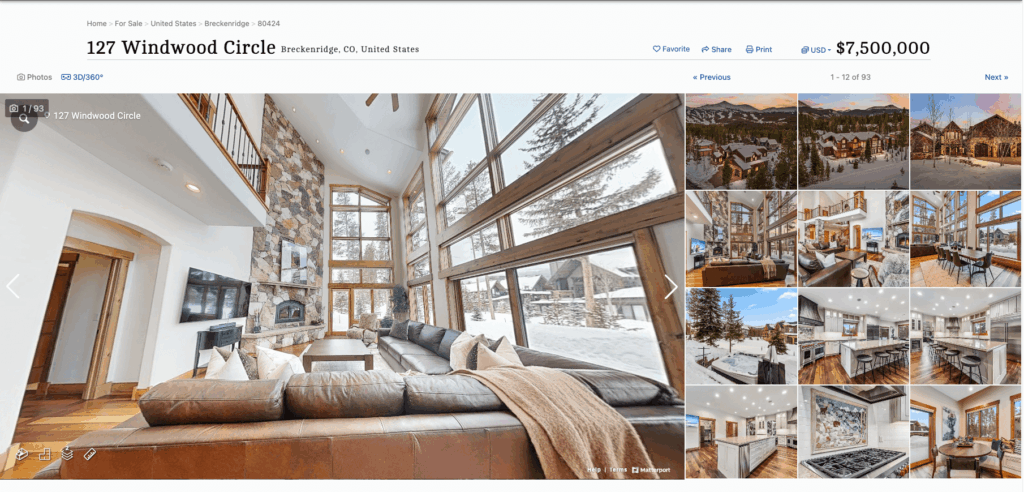
-
Build trust with a blog: Regular blog posts demonstrate your expertise and show your personality. You can write about local market trends, home buying tips, or neighborhood guides if you’re working in a specific area. Answer common questions in an FAQ format to address buyer concerns before they even ask or create article clusters to address common queries. For example, Realtor.com have a whole collection of articles to help people buy their first home.

-
Make yourself available: Include contact forms on every page, especially individual property listings where interest is highest. Create a dedicated contact page with multiple ways to reach you (phone, email, chat) so clients can connect however they feel most comfortable.
-
Prove your past success: Display reviews and testimonials from previous clients prominently. These real experiences from satisfied customers provide social proof that you deliver on your promises. If you have any awards or recognitions, don’t be shy! Show off like Taylor Morrison do.

The benefits of using WordPress to build your real estate website
Creating a real estate website with WordPress gives you significant advantages over other platforms. Let’s look at what makes WordPress the top choice for property professionals.
- Ease of use: WordPress makes organizing and managing hundreds of property listings straightforward. You can add, edit, and categorize properties without technical expertise. The interface is intuitive, allowing you to update information quickly as properties change status or price.
- Scalability and flexibility: As your business grows, WordPress grows with you. You can easily integrate tools like Admin Columns to enhance your property management capabilities. Whether you have 10 or 1,000 listings, WordPress handles the load without slowing down.
- Custom designs without coding: WordPress themes and plugins let you create a unique website that matches your brand. You can add virtual tours, interactive maps, and advanced search filters – all without writing a single line of code.
- Complete data ownership: Unlike proprietary platforms, WordPress gives you full control of your data. All client information and property details belong to you, not locked in someone else’s system. This freedom also means you can export your data anytime or switch service providers without losing valuable information.
- Seamless tool integration: WordPress connects directly with real estate-specific tools like Multiple Listing Service (MLS) without extra costs. This integration saves you time and money while keeping your listings accurate and up-to-date.
How to set up your real estate website
Starting a real estate website can feel like walking into an open house with too many rooms to explore. There are countless decisions to make about design, features, and technical setup. Thankfully, you don’t need to figure it all out alone. Let’s break down the process into manageable steps to get your property website up and running.
Setting up technical foundations
Before adding a single property listing, you need solid technical foundations:
-
Choose a domain name:
- Pick something easy to remember that directly relates to your business.
- Include your industry if it helps clarify your services (e.g., SmithPropertyRealty.com)
- Keep it short and simple – avoid hyphens or unusual spellings.
- If you plan to expand beyond your current location, avoid city or neighborhood names in your domain.
You can register domains through providers like GoDaddy or Namecheap. Both offer simple registration processes and additional services like email hosting.
-
Select the right hosting provider:
- Look for excellent uptime and fast loading speeds – clients won’t wait for slow property pages.
- Strong security features and regular backup options protect your valuable listing data.
- Room to grow as your property listings increase.
- Responsive customer support for when issues arise.
Quality hosting options include Cloudways, SiteGround, and Hostinger, all of which offer WordPress-specific hosting plans.
-
Set up automated backups:
- Configure regular backups of your entire property database.
- Store backups in multiple locations for added security.
- Test your backup restoration process before you need it.
Choose a fitting real estate theme
A quality real estate theme provides optimized property listing templates with search filters that help buyers find exactly what they’re looking for. These themes are built to be mobile-responsive (essential since over 60% of property searches happen on phones), load quickly, and follow SEO best practices to help your listings rank well.
Here are some top WordPress themes specifically designed for real estate:
-
Realtyna WPL Pro: Excels at MLS integration and complex property search functionality. If you manage hundreds of listings that need frequent updates from external databases, this theme streamlines that process beautifully.

-
EstateEngine: Offers stunning visual presentation for luxury properties. Its gallery options and virtual tour integrations make it perfect for showcasing high-end real estate with immersive experiences.
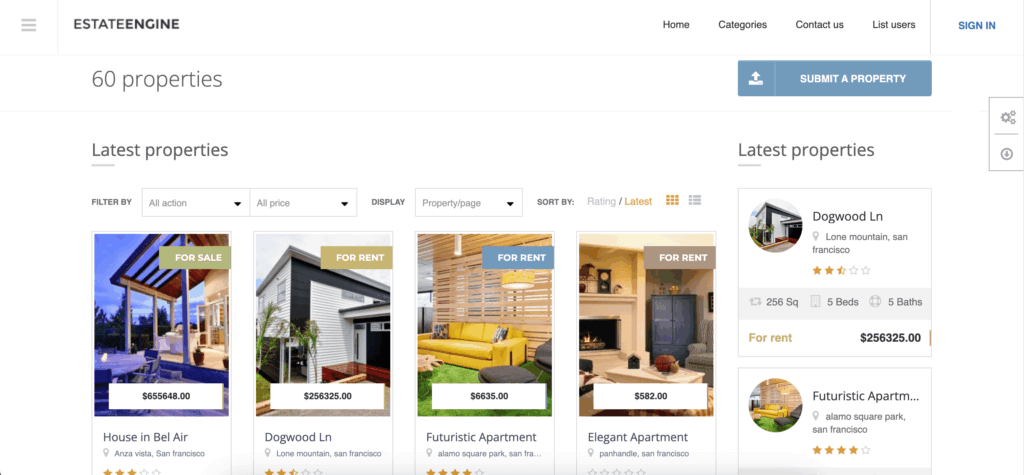
-
Divi: Provides ultimate flexibility with its drag-and-drop site builder and various themes. While not exclusively for real estate, it allows you to create custom property layouts without coding knowledge and adapt quickly as your business evolves.

-
Listable: Shines with its simplicity and clean design. Best for agents who want a minimalist approach that puts properties front and center without distractions.
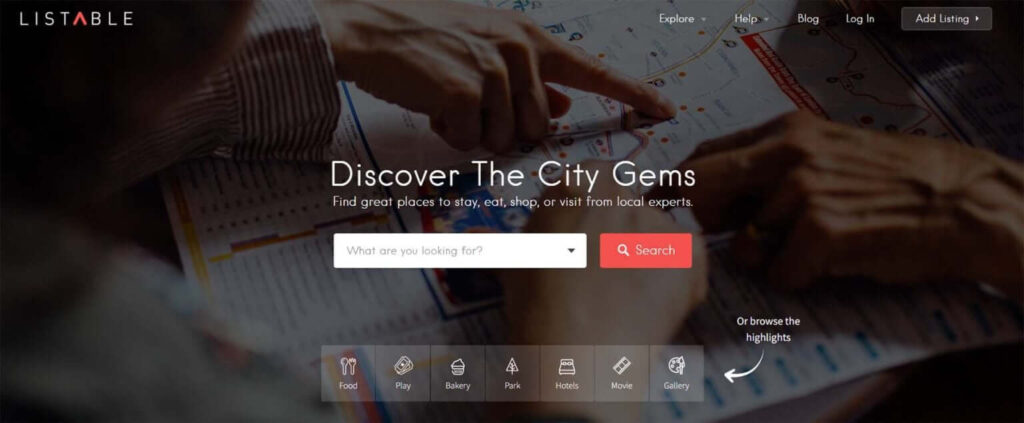
-
Kadence Theme: Combines fast performance with extensive customization options, including an AI website generator. Its lightweight code means property pages load quickly while still offering advanced layout controls.
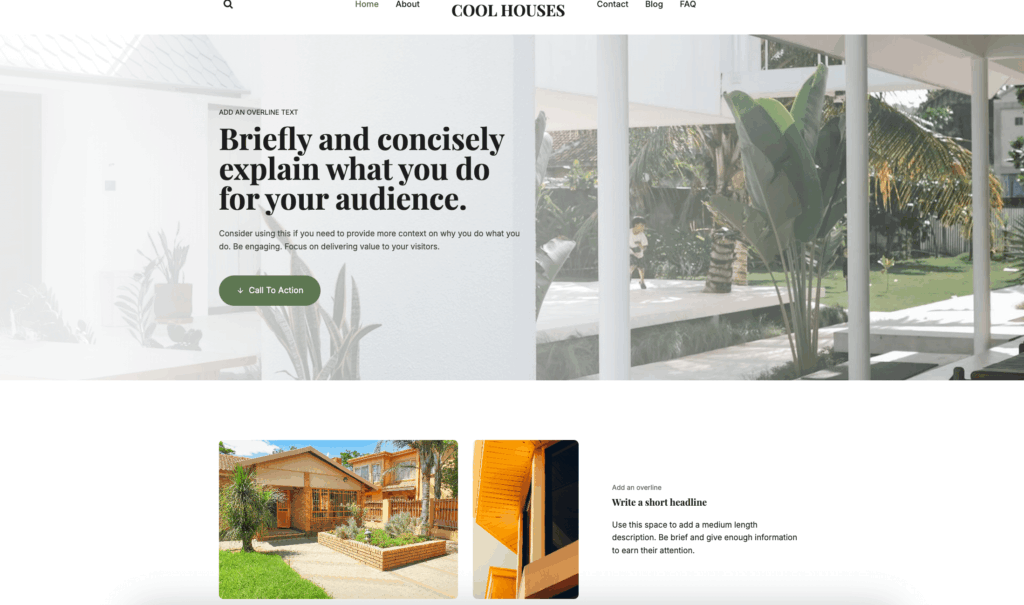
When choosing your theme, evaluate these factors:
- How quickly do property listing pages load on mobile devices?
- Can you easily modify colors, fonts, and layouts to match your brand?
- Does it include lead capture forms on property pages and contact forms throughout the site?
- Is the code clean and optimized for search engines with schema markup for properties?
- Do the property search filters allow for the specific criteria your clients care about most?
The right theme forms the foundation of your online presence, so take time to choose one that aligns with your specific business needs.
Build your WordPress real estate website
Once you’ve selected your theme, it’s time to build the essential pages that form the backbone of an effective real estate website. Each page serves a specific purpose in guiding potential clients through their property search journey.
-
Home page: This is the first impression most visitors will have of your business. Feature your best properties, highlight your unique selling points, and include clear calls to action. Keep it clean and focused with professional photos and easy navigation to property searches. Rather than trying to cram everything onto this page, aim for a design that guides visitors toward the next logical step. Most of the time, this is just a search bar to help them begin their journey.
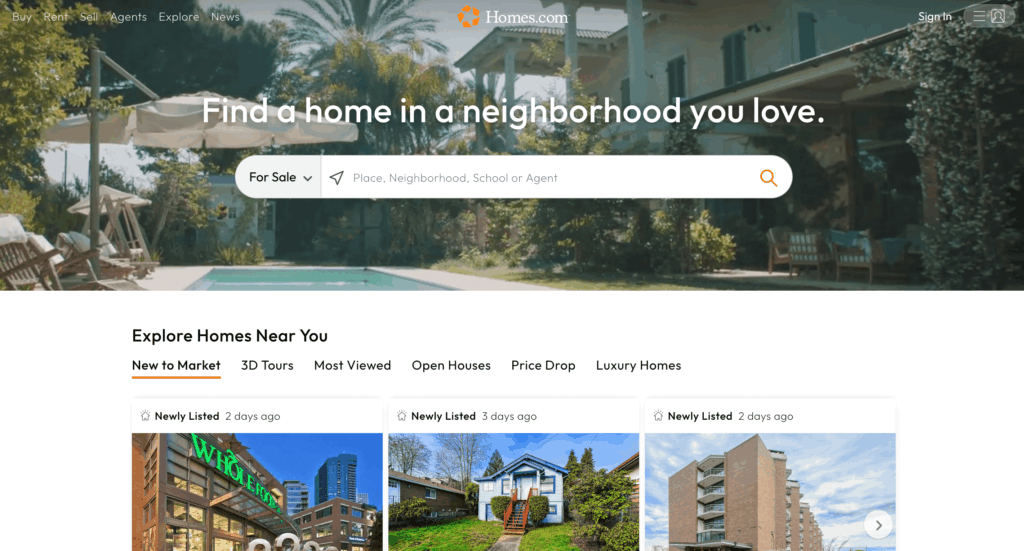
-
About section: Buyers and sellers want to know who they’re working with. Create a compelling about page that explains your experience, business values, and customer commitment. Add team member profiles with photos and specialties if applicable. This humanizes your brand and helps establish the trust that’s so vital in real estate transactions.
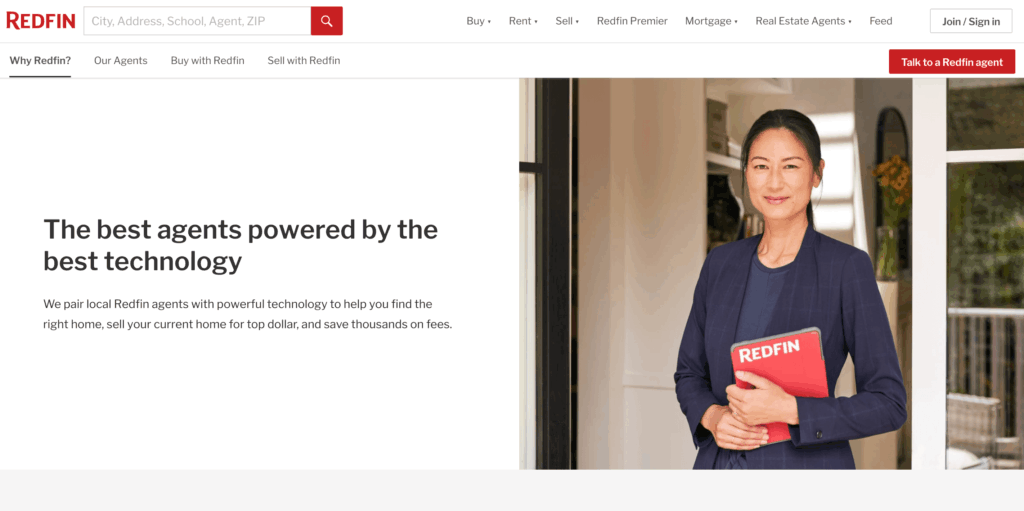
-
Contact options: Make it ridiculously easy for prospects to reach you. Create a dedicated contact page with your phone number, email, office address, and a contact form. Also add this contact information to your website footer so it’s accessible from everywhere. For maximum lead capture, include tailored contact forms on every property listing page with pre-filled subject lines like “Question about [Property Address].”
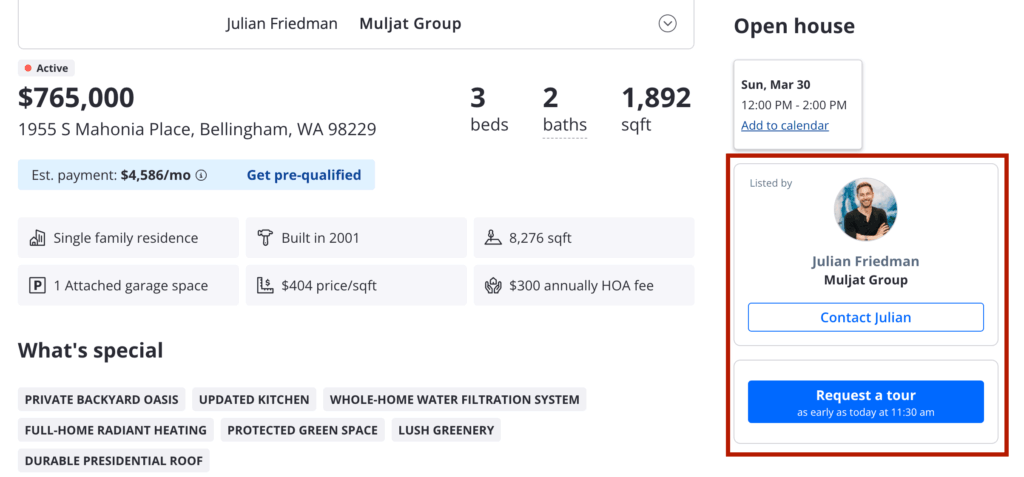
-
Property listings overview: Design a main property search page with filters for price range, location, property type, number of bedrooms, and other relevant features. Make sure this filtering system is intuitive and mobile-friendly.
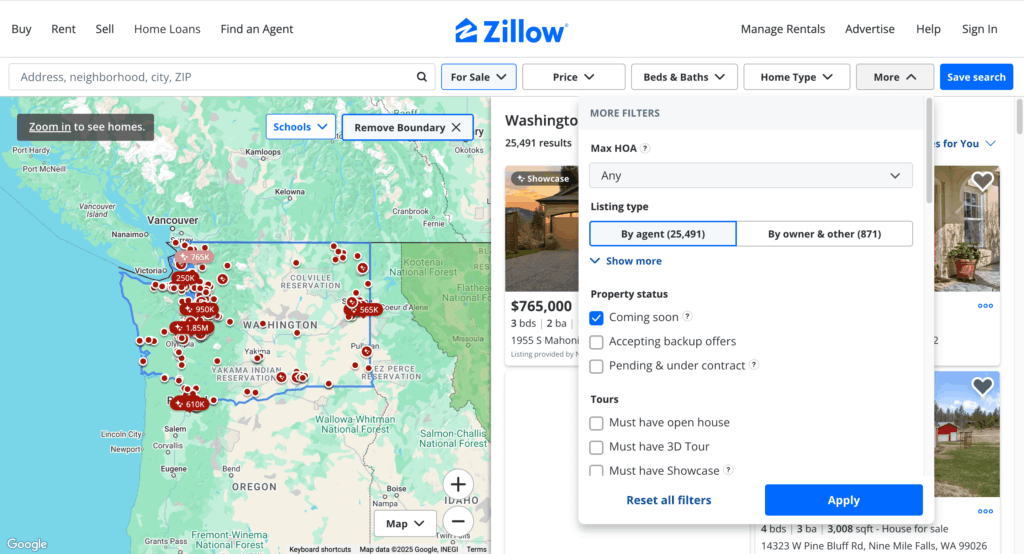
-
Individual property pages: Create detailed, consistent layouts for individual listings that showcase each property effectively. You might want different templates for residential sales, rentals, and commercial properties, each highlighting the most relevant information for that category.
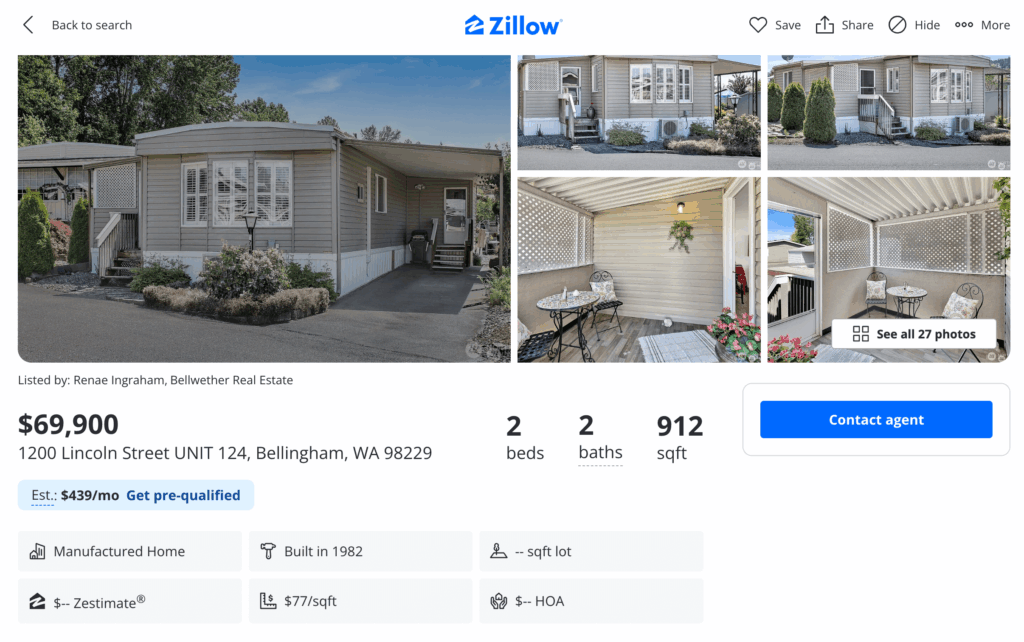
Create data-rich property listings
Your property listings are the heart of your real estate website. Creating a structured approach to managing and displaying this data helps you present properties consistently and professionally.
Customer-facing pages that buyers love
Your property overview page needs powerful filtering options for price range, property type, location, bedrooms, and amenities. Include an interactive map so buyers can search visually based on neighborhood preferences.
Individual property pages should feature:
- Complete specifications (square footage, year built, lot size).
- Detailed room-by-room descriptions.
- Multiple high-resolution photos and video tours.
- Interactive maps showing the exact location.
- Nearby amenities and school information.
Add a comparison tool so visitors can view multiple properties side-by-side – this helps buyers make decisions while keeping them on your site longer.
Backend property database structure
Build a foundation with:
- Custom post types for different property categories (sales, rentals, commercial).
- Taxonomies for locations, features, and amenities.
- Custom fields for all specifications including price history.
Streamlining your workflow
Create a logical property listing process:
- Draft status for new listings.
- Review status for team verification.
- Publish when complete and accurate.
🤓 Extra tip: Set up bulk import/export functions to manage multiple listings efficiently and configure the automated systems to update prices based on your MLS data.
For visual inspiration on implementing a well-structured property management system, check out our example of a customized real estate list table to see these concepts in action.
Get Admin Columns Pro
Effortlessly sort, filter, edit, export, and organize content in the WordPress admin.
Select real estate website-specific plugins for extra functionality
Just by itself, your website’s theme will not be enough to make it a functional and useful property website – you need some extra plugins for that.
First, we have Admin Columns, which can really transform how you manage property listings in WordPress. This powerful plugin lets you customize your admin view with the exact property details you need to see. You can add, remove, and reorder columns showing price, location, status, bedrooms, or any other property data. For real estate professionals handling dozens or hundreds of listings, this visibility saves countless hours of hunting through individual property entries.
Advanced Custom Fields (ACF) works perfectly with Admin Columns to create a complete property management system. ACF lets you build custom data fields for any property information you need – from price history to neighborhood walkability scores. When combined with Admin Columns, you can display and edit all this custom data directly from your listings overview. This integration means you can sort, filter, and bulk edit properties based on any criteria without opening each listing individually.
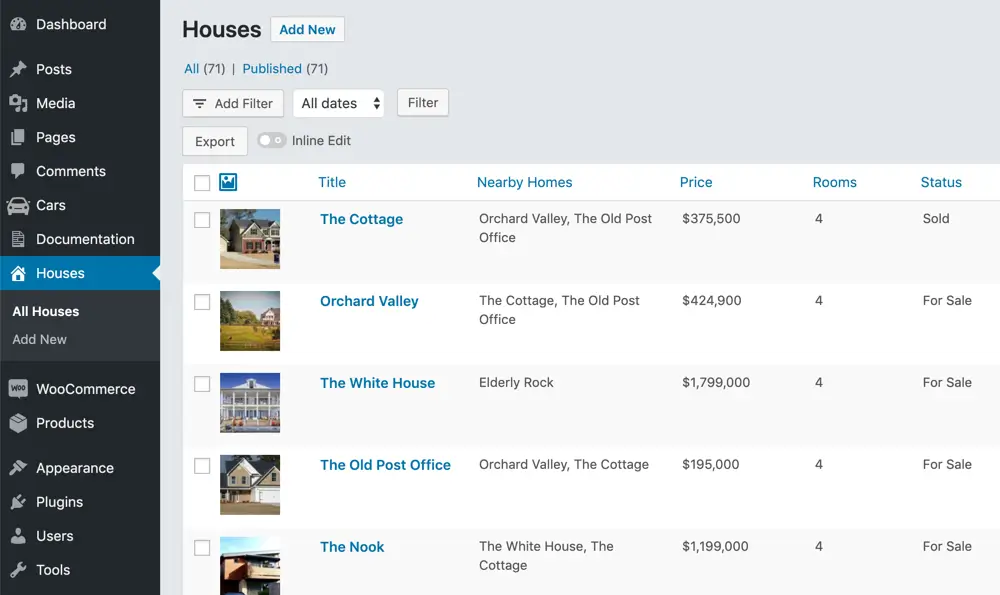
Besides AC and ACF, there are some other plugins that we recommend for creating a full real-estate experience. Let’s break them down:
| Type of plugin | Plugin name | Purpose |
| Real estate-specific plugins | Realtyna WPL | Excels at MLS integration, automatically importing and synchronizing property data from multiple listing services to keep your inventory current. |
| Easy Property Listings | Focuses on simplicity while offering comprehensive listing management, with specialized fields for different property types and built-in contact forms. | |
| WP VR | Adds virtual reality tours to your listings, allowing potential buyers to explore properties remotely with 360° views. | |
| Map integration | Divi Map Module | Creates interactive property maps with custom markers and location clustering if you’re using the Divi theme. |
| Interactive GEO Maps | Offers advanced mapping capabilities with customizable regions and data visualization for market analysis. | |
| Performance plugins | Imagify | Automatically compresses property images without visible quality loss, dramatically improving page load times. |
| WP Rocket | Implements caching, lazy loading, and code optimization to make your property-heavy website load faster. | |
| Marketing tools | Yoast SEO or Rankmath | Helps optimize your property listings for search engines with structured data and content analysis. |
| Klaviyo or Mailchimp | Send targeted property alerts and market updates to potential buyers based on their preferences. |
Enhancing your property management with Admin Columns
Managing extensive property listings becomes challenging as your real estate business grows. Admin Columns transforms this potentially overwhelming task into a streamlined operation.
Customized list tables for enhanced overview
Admin Columns lets you create a custom dashboard with exactly the information that matters – ‘Price’, ‘Rooms’, ‘Status’, ‘Location’, and any other data points you track. This gives you an instant snapshot of your entire property inventory.
Direct inline editing of property details
With Admin Columns, you can edit information directly from your property overview screen. This inline editing works for titles, featured images, custom fields, and virtually any property data without opening each listing individually.

Smart filtering and sorting of listings
When a client asks about specific properties, you need information fast. Admin Columns provides stackable filters that let you narrow down properties by any combination of criteria – price range, bedrooms, neighborhood, or listing status.
Bulk updates for multiple properties
Select multiple listings and update them all at once. This is perfect for changing statuses (marking properties as “Sold”), updating price ranges, or adding new features to a group of similar properties.
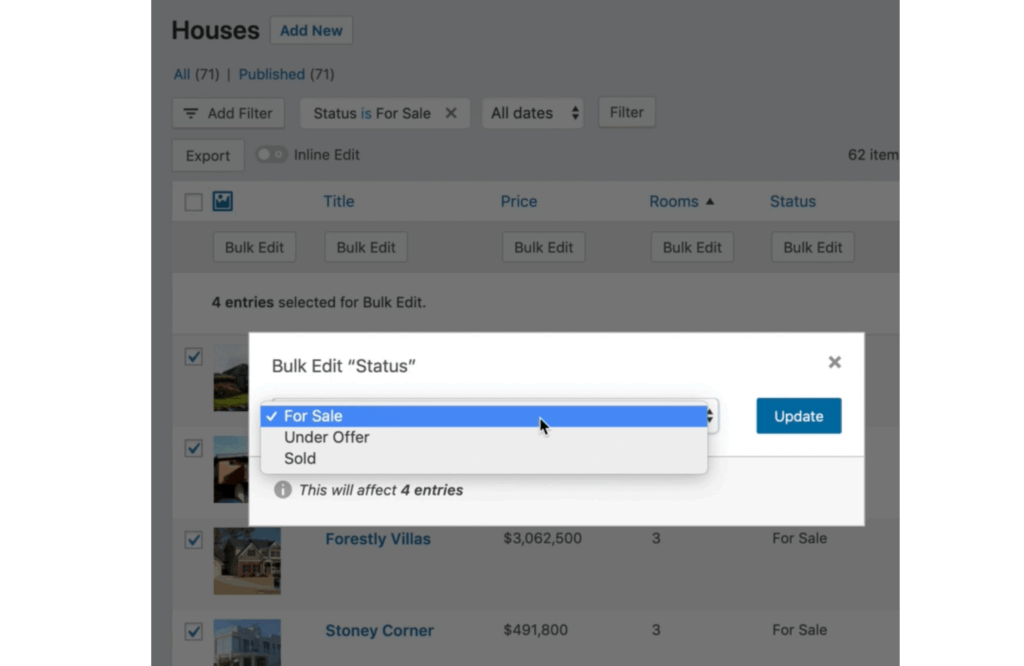
Custom property data export and import
Generate reports by exporting property data to CSV files. When you receive new listings, import them in bulk with mapping to your custom fields. This minimizes manual data entry errors.
Seamless integration with your tools
Admin Columns works perfectly with Advanced Custom Fields for managing complex property data structures. It’s compatible with any custom post type or field, fitting seamlessly with your existing real estate website setup.
Start managing your properties smarter today!
WordPress gives real estate professionals a cost-effective way to manage their online presence. You don’t need to spend thousands on custom development – the platform grows with your business and makes content management simple, even for large property portfolios.
Creating a successful real estate website comes down to three essential pillars:
- First, building trust through complete property information, quality images and videos, responsive communication channels, and authentic client testimonials.
- Second, establishing solid technical foundations with reliable hosting, a real estate-focused theme, and a thoughtful site structure that guides potential buyers through their property search journey.
- Third, implementing efficient property management systems that save time and reduce errors in your day-to-day operations.
Tools like Admin Columns transform what could be a complex, time-consuming process into a streamlined workflow. With features like inline editing, smart filtering, bulk updates, and data export capabilities, you can manage hundreds of properties from a single screen. This efficiency saves time and provides more accurate, up-to-date information to potential buyers, ultimately helping you close more deals.
Take control of your real estate website today with Admin Columns and ACF, and turn it into the powerful business tool it should be.
Get Admin Columns Pro
Effortlessly sort, filter, edit, export, and organize content in the WordPress admin.
